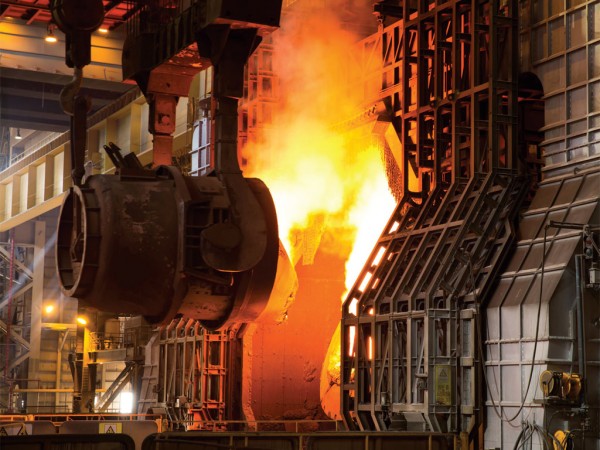
The Chinese government has committed more than once to curbing its excess steel-producing capacity, a condition which contributed to a pre-COVID glut of steel in global markets. Detractors may rightly be skeptical of China’s intentions, as previous cuts years ago did little to change global market conditions, and recent data does little to support China’s credibility. Steel production in China neared an all-time record in March, when production increased by 19.1% over 2020. Production during the first quarter of 2021 increased by 15.6% year over year.
But other data tell a different story. Steel futures in China reached new highs in late April, a signal that traders believe that the nation’s commitment to lowering production is real. Rebar futures in Shanghai climbed to their highest level since began trading in 2009, and hot-rolled coil reached a seven-year high, both advancing over 3% in a week.
Reports indicate that Handan city in Hebei province plans to curb output, and some mills in the Fengrun area of Tangshan have halted production altogether. Tangshan already faced production restrictions imposed by the central government as part of a push to control emissions.
Production increases don’t necessarily translate to overproduction, since steel demand is on the rise, globally and especially in China. An economic boom, particularly seen in the construction and automotive sectors and which began as early as last February, is now underway in the People’s Republic.
The World Steel Association recently forecast that steel demand globally will grow by 5.8% in 2021 after declining by 0.2% in 2020. “A surprisingly robust recovery in China” accounts for last year’s small contraction in steel demand, according to Saeed Al Remeithi, chairman of Worldsteel’s economics committee. Steel demand in China saw growth of 9.1% in 2020, while demand in the rest of the world steel contracted by 10%.
“Almost all economic activity except retailing resumed full productivity by May” in China, according to a Worldsteel report. After contracting by 6.8% in the first quarter of 2020, China’s economy recorded annual growth of 2.3% in 2020 and is expected to accelerate to 7.5% or higher in 2021.
The Chinese government’s measures to stimulate the economy, including new and accelerated infrastructure projects, allowed the country’s construction sector to return to normal at the end of April 2020. Automotive production in China contracted by 45% during the lockdown, but declined by only 1.4% for the whole of 2020, indicating a strong recovery during the second half of the year. Steel use in China rose by 9.1% in 2020, according to Worldsteel, and demand is expected to grow by 3.0% in 2021.
Domestic demand may be absorbing the increases in Chinese steel production, so increases don’t necessarily signal overproduction. But the tea leaves are difficult to read. A report from a futures analyst in Shanghai maintained that declines in production in Hebei “are seen as a prelude to the cut in total production this year.” On the other hand, the report added, “handsome profits” could “stimulate mills in other regions to boost production as much as they can.”

Follow us on social media: